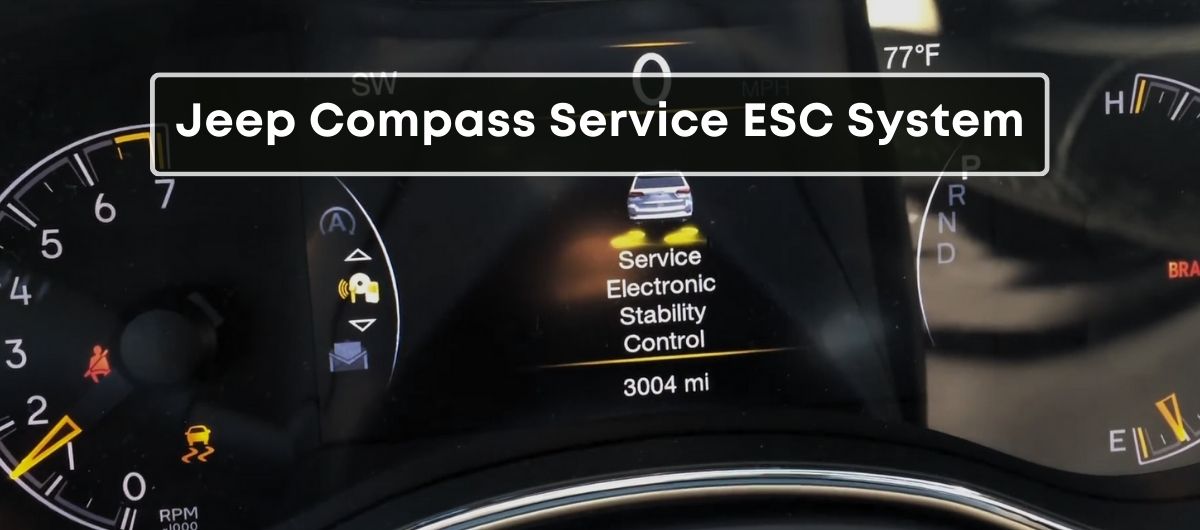How to Reset the Jeep Compass Service ESC System Light?
The simplest way to fix the ESC light on the Jeep Compass is to reset the ECU.
That’s because sometimes the ECU can malfunction and falsely trigger different warning messages.
Therefore, you need to disconnect the battery cable at the negative terminal, and wait for 4-5 minutes before reconnecting.
If the message remains there after reconnecting the cable (or disappears and then reappears), it indicates a hardware malfunction in your vehicle.
In such a case, you’ll need to test both batteries, ABS sensors with their wiring connections, steering angle sensor, wheels alignment, ABS module, etc., as there are the components that usually trigger this message.
If you don’t have the time to check all of them, get an OBD-II scanner. The error codes generated by the scanner will lead you straight to the culprit.
In case you’ve been reading this blog lately, you’ll know that we’re currently covering the warning messages you get in different vehicles, especially the ones that appear on the startup process, such as “Key Fob Not Detected,” “Service Battery Charging System,” and “System Off To Save Battery.”
Continuing with this trend, we’ll discuss the Service ESC system warning message in this blog post – its main causes and fixes.
Although common across all Jeep vehicles, I’ve noticed it occurring predominantly in Jeep Compass 2017-2021 models.
What is the ESC (Electronic Stability Control) System?
The Electronic Stability Control (ESC) system, alongside ABS and traction Control System, is one of the main safety features found in modern vehicles, such as the Jeep Compass.
This safety feature is designed to enhance the vehicle’s stability by detecting and reducing the likelihood of skids or loss of control.
If the ESC system detects any difference between the driver’s input and the vehicle’s direction (through the steering angle sensor and wheel speed sensors), it automatically applies the brakes to specific wheels and can adjust engine power to stabilize the vehicle.
What Does the “Service ESC System” Message Mean?
The service ESC system warning light means the vehicle’s computer (ECU) believes your ESC system not to be working correctly.
There can be two reasons for this warning light to appear on the dashboard screen of your Jeep Compass.
The first one is that the ECU is malfunctioning. Although it’s rare, the ECU can malfunction and trigger different warning messages.
You can verify this by using an OBD-II scanner. If the scanner does not give you any DTC code, it usually indicates that the ECU is not working properly.
The second reason is that the ECU is working correctly, and a component of the ESC system is indeed malfunctioning.
How to Fix the Service ESC System Warning In Jeep Compass?
If you have reset the ECU and nothing’s changed, you’ll need to find the underlying malfunctioning component that is causing the ECU to trigger this warning.
1. Test the Primary Battery:
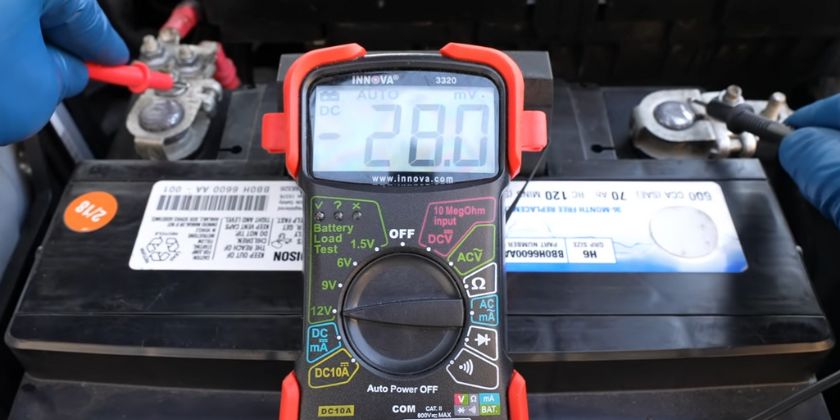
If the Jeep Compass was fine last night and this morning you’re getting the Service ESC System light, alongside other messages, such as Dynamic Steering Torque Required, it usually points to a low-voltage battery.
Modern vehicles are very sensitive about battery health. If your battery has a low voltage (which can happen for multiple reasons), you’ll see a bunch of warning messages on the instrument panel.
The low voltage also prevents the vehicle from starting, which is why many owners falsely believe that those messages are the reason their car is refusing to start.
To confirm whether this hypothesis is true or not, you’ll need to test the voltage of the primary battery with a multimeter.
Turn the ignition off. Set the multimeter to DC Voltage mode and connect its probes to the battery terminals (the red probe to the right terminal and the black probe to the left terminal).
If the multimeter reads less than 12.2V, it means the low battery voltage is causing your vehicle not to start.
There are multiple fixes for this issue, depending on why your battery voltage got low.
If it’s low because you put the vehicle in accessory mode for too long, you need to jump-start the battery and then drive it for at least 30-40 minutes so that the alternator can charge it.
On the other hand, if the battery drains overnight again, it means it’s not able to hold a charge due to aging and should be replaced.
2. Test the AUX Battery:
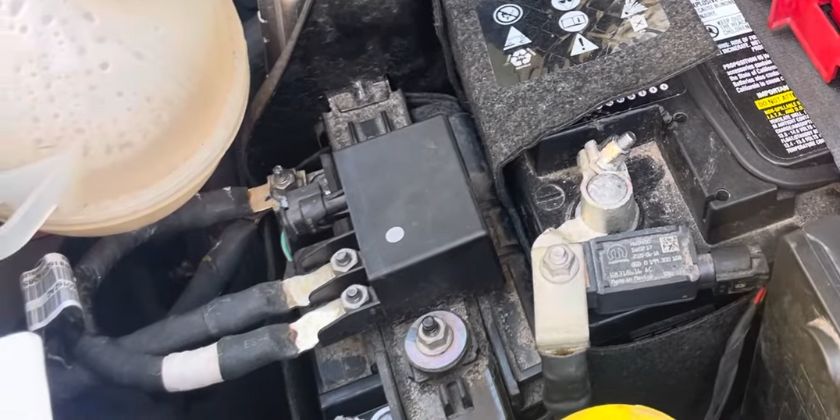
If you’ve checked the primary battery and its voltage is more than 12.2V (engine off), it’s time to check the auxiliary battery.
Many Jeep Compass owners don’t realize that their vehicle comes with a second battery specifically designed for the auto start-stop feature to meet its extra power demands.
However, if this battery has a low voltage, it can trigger different warning messages – just like the primary battery.
Therefore, test this battery with a multimeter following the steps we discussed earlier and jump-start/replace it depending on the problem.
3. Test the Wheel Speed Sensors
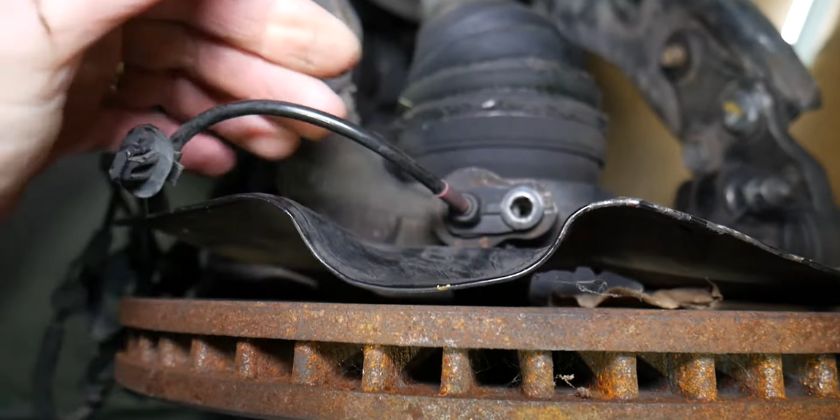
If you’re getting the service ESC system warning alongside the ABS/traction control and SERV 4WD lights, you should check the wheel speed sensors.
Also known as ABS sensors, they monitor the rotational speed of each wheel and send the data to the ECU. Based on that data, the ECU determines whether there’s any wheel lockup, wheel slippage, or loss of traction.
Since the ESC System relies on the ABS sensors, it won’t work properly if any of them is not working. The ECU detects this as an issue with the ESC system itself and triggers the service ESC system warning.
This video will show you how to test an ABS sensor with a multimeter.
Fortunately, this issue can often be solved by cleaning, as the ABS sensors usually malfunction due to accumulated dirt.
If it doesn’t work even after cleaning, it means either the sensor or its wiring connections are damaged. In such a situation, replacing the sensor is the only option.
4. Test the Steering Angle Sensor
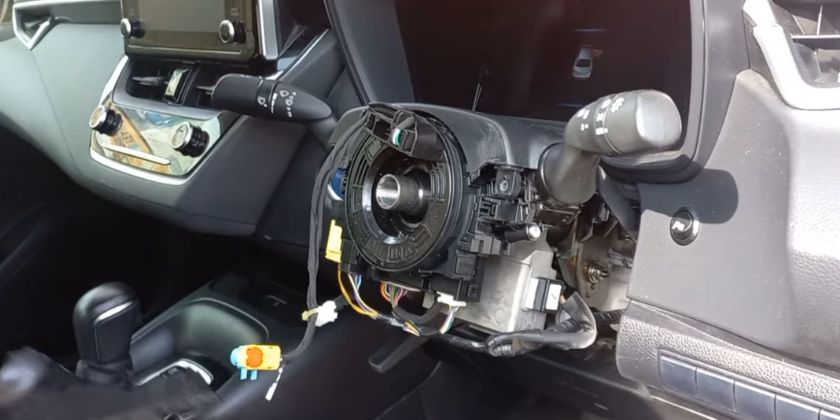
The next sensor we’ll check is the steering angle sensor.
This sensor measures the angle of the steering wheel and the rate at which it is being turned, helping the ESC in determining the driver’s intended direction.
If this sensor malfunctions due to aging, misalignment, or damage from an impact, it can send incorrect data to the ESC system.
This inaccurate data might suggest that the steering wheel is turned more or less than it actually is, or it may fluctuate erratically, not corresponding to the actual steering wheel movement – leading the ECU to trigger the service ESC system warning.
The good thing is that the steering angle sensor, like the ABS sensor, can be tested with a multimeter.
Watch the following video for more information on this process. If it’s faulty, you’ll need to either recalibrate or replace it, depending on the problem.
5. Test the ESC System Fuse
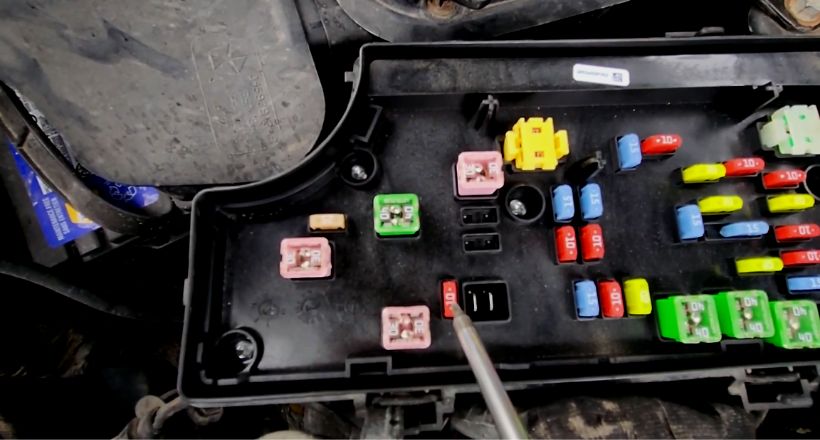
The ESC system often comes with a fuse designed to blow or break in the event of an electrical overload or short circuit.
If this fuse blows, the ESC system will not get any power from the battery and will not work, resulting in the service ESC system message on the screen.
To check whether that’s the case or not, you need to locate the ESC fuse in the fuse box, pull it out, and physically examine it.
If it appears to be burned or the inner metal strip is broken (or melted), it’s blown and should be replaced with a new fuse of the same amperage.
6. Check Wheels Alignment
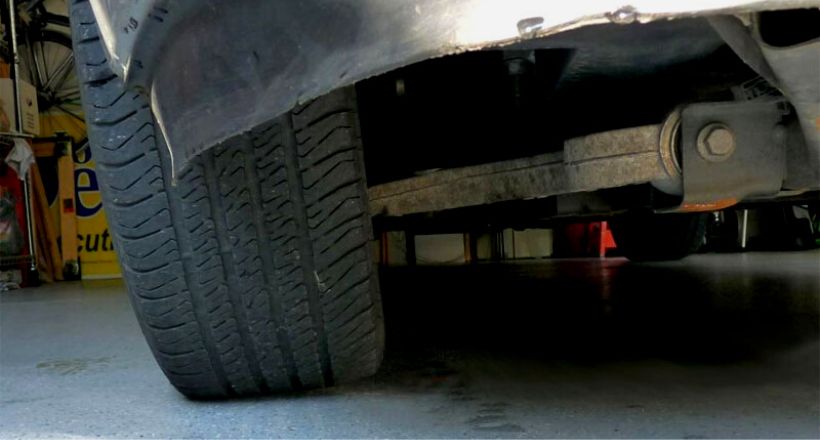
Wheel alignment refers to the angle adjustment of the wheels against each other.
If the wheels are misaligned against each other (due to improper installation or a faulty steering rack), they will have uneven tire wear, which will affect the accuracy of their corresponding ABS sensors.
This inaccuracy, in turn, causes the ECU to trigger the ABS and service ESC warning lights, as both systems rely on that data.
7. Straighten The Steering Wheel
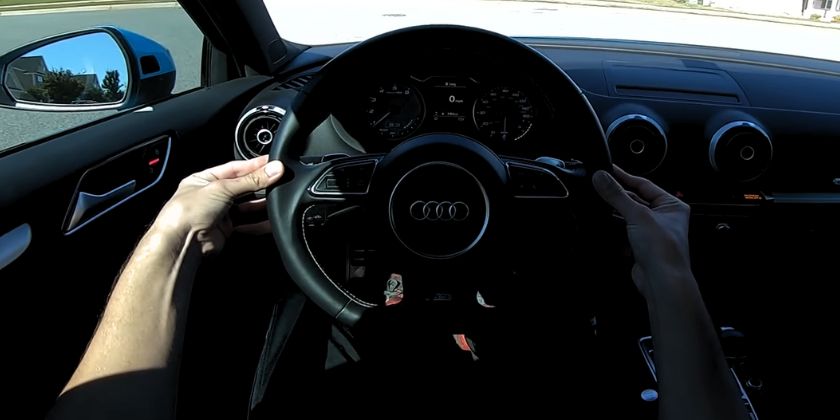
The possible explanation behind this is that if the steering wheel is not straight, the data sent to the ECU by the steering angle sensor will be inaccurate and will not match the data given by ABS sensors.
The ECU will detect this discrepancy and trigger the ESC warning light.
In short, you need to check your steering wheel and make sure it’s not off-centered.
8. Test the ABS Module
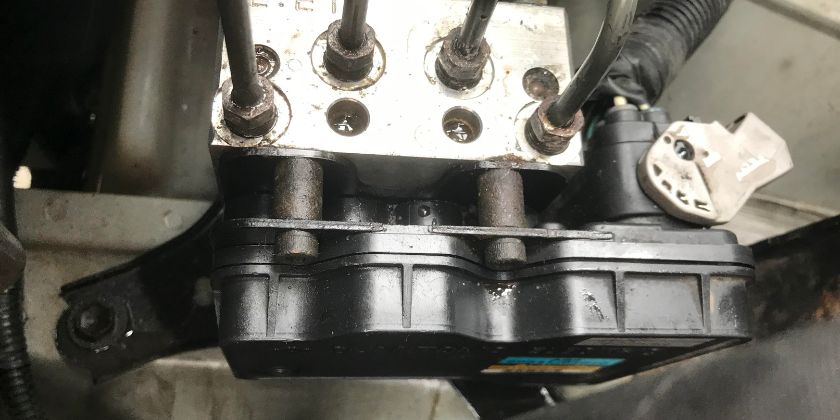
In many vehicles, the ABS module is linked with the ESC system.
In such a case, if this module has a problem and is not working correctly, the ABS and ESC systems will not function, and the ECU will turn on their respective lights.
Therefore, if you’ve tested all of the components mentioned above, it’s time to do the same with the ABS module.
You need to hire a mechanic for this, as it’s too technical for DIY.
9. Test the Vacuum Pump
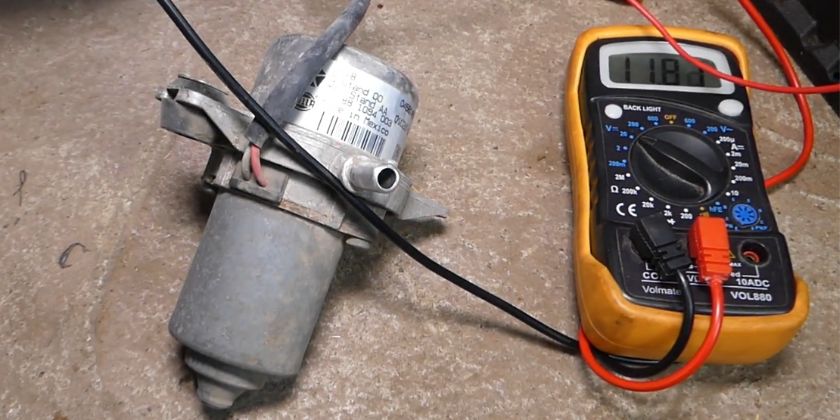
Diesel engines do not produce as much vacuum during operation as gasoline engines.
Therefore, many vehicles use a separate vacuum pump to provide the necessary vacuum for the brake booster.
If the vacuum pump is not functioning correctly and the braking system’s efficiency is compromised (due to little/no vacuum), this can affect the ESC system’s ability to control the vehicle effectively – resulting in the warning message.
Sometimes, a vacuum pump itself is working but the hose attached to it is leaking, leading to vacuum loss.
Therefore, make sure to check both the vacuum pump and its hose before reaching any conclusion.
You can watch the video below for more information.
Frequently Asked Questions
What Does an A With An Exclamation Point Mean on a Jeep Compass?
The A with an exclamation point on a Jeep Compass means the auto start-stop function on the vehicle is not working properly.
Can I Still Drive My Car If It Says Service ESC System?
Yes, it’s possible to drive a car with the service ESC system warning, but you need to be aware that the ESC system is not working. Therefore, don’t drive at high speeds and avoid slippery conditions.
What Causes ESC Failure?
Low battery voltage, blown fuse, faulty steering angle sensor, and ABS system issues are some common causes of ESC system failure.
Can Bad Tires Cause the Service ESC Light to Come On?
Yes, unevenly worn, damaged, or low-pressure tires can indirectly lead the ESC warning light to turn on.
Each of these conditions can result in inaccurate ABS sensor data, which can result in the ECU triggering the warning light, as it detects the inaccuracies as a fault in the ESC system.
Is ESC the Same as Traction Control?
No, ESC and Traction Control serve two different purposes.
The ESC is primarily focused on enhancing the vehicle’s stability by preventing skids or loss of control during cornering or sudden maneuvers.
On the other hand, the Traction Control System is designed to prevent wheel spin during acceleration, especially in slippery conditions.
What Is The Difference Between ESP And ESC?
The ESP (Electronic Stability Program) and ESC (Electronic Stability Control) are essentially the same system with different names. While ESC is commonly used by North American manufacturers, ESP is more popular in Europe.
Is ESC Expensive to Fix?
It depends on the malfunctioning component, your vehicle, and the mechanic’s fee.
If I have a damaged ABS sensor, the new one comes in around 15-20 bucks. On the other hand, if you need a new ABS module, it’ll come at a lot higher price.
Similarly, the mechanic’s fee in a tier 1 city will be much higher than the one in the countryside.

